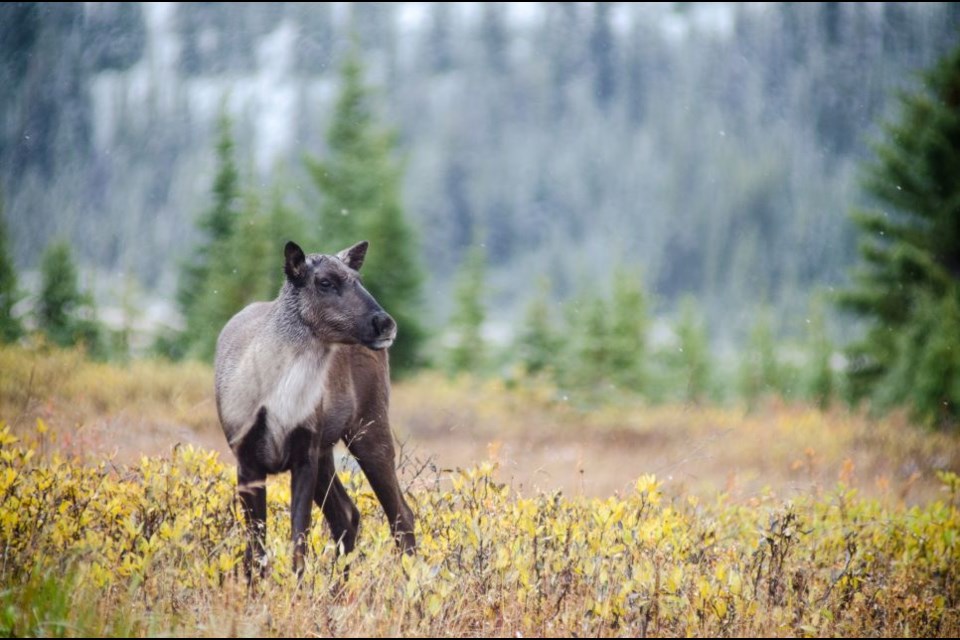Parks Canada is in the home stretch as it moves towards the opening of its caribou conservation breeding facility on a 65-acre site off Geraldine Road.
The centre is now more than halfway finished, reported Jean François Bisaillon, project manager for the Caribou Recovery Program in Jasper National Park.
“We're really pleased actually with the progress that our contractor is making … which is amazing,” he said.
Most, if not all, of the vegetation work is now completed and the three buildings are taking shape. The expectation is that workers will start installing the fences and the gates within the next few weeks.
“Essentially, we're on target,” Bisaillon said. “We're on schedule. As it is, we're planning to take possession of the breeding centre probably by October or November this year. This is really great news.”
The breeding centre is expected to help restore dwindling caribou populations in Jasper National Park.
The rest of Parks Canada’s most recent update on caribou focuses on more scientific efforts. The team has formed a Source Population Working Group along with the Alberta Ministry of Environment and Protected Areas, British Columbia’s Ministry of Water, Land and Resource Stewardship, and Environment and Climate Change Canada (ECCC).
This new working group is tasked with evaluating options for sourcing the caribou for the conservation breeding program.
That task is neither as easy nor as straightforward as it might appear to an outsider. Choosing the best animals for the purpose of breeding and growing the population of a herd is one thing; making sure not to make circumstances worse for other herds at the same time is something else entirely.
“We need to look at this work very carefully. We need to determine where the animals to populate the breeding center will come from,” Bisaillon said.
“That's very important work that we're doing. It's just one step along many other steps that we will need to take over the next several months. We're looking at it right now from I'd say a scientific or biological perspective. Eventually, when we're ready and we have a number of scenarios that work with our partners that that we feel are acceptable then we also need to consider the Indigenous perspective, the social aspect, and so on.”
Along with all that, they must also respect other jurisdictions. Efforts like this require solid relationships, so Bisaillon acknowledged and expressed his appreciation for the involvement of the British Columbia government as well as the ECCC on the federal level.
“Really, the key here is for all of us to work together, so we're successful. The Jasper recovery program, which includes the breeding program, has the potential also eventually perhaps to help other jurisdictions with their recovery efforts. We're really looking at it from the broad perspective as well.”
Members of the Kelly Lake Cree Nation and Mountain Cree were in Jasper in December to confer with the team about caribou and wildlife monitoring. They shared information about the monitoring and the remote camera work that they are using in their communities and learned more about Parks Canada’s own remote camera monitoring at the same time.
The more monitoring that is being done, regardless of where, is always insightful because the information supports recovery actions, Bisaillon said.
The construction of the breeding centre is ongoing, and ATCO started work to bury electrical distribution lines along Highway 93A on April 1. People are advised to take precautions and heed closures and other signage. The road will reopen to vehicle traffic for the summer season on May 15.



